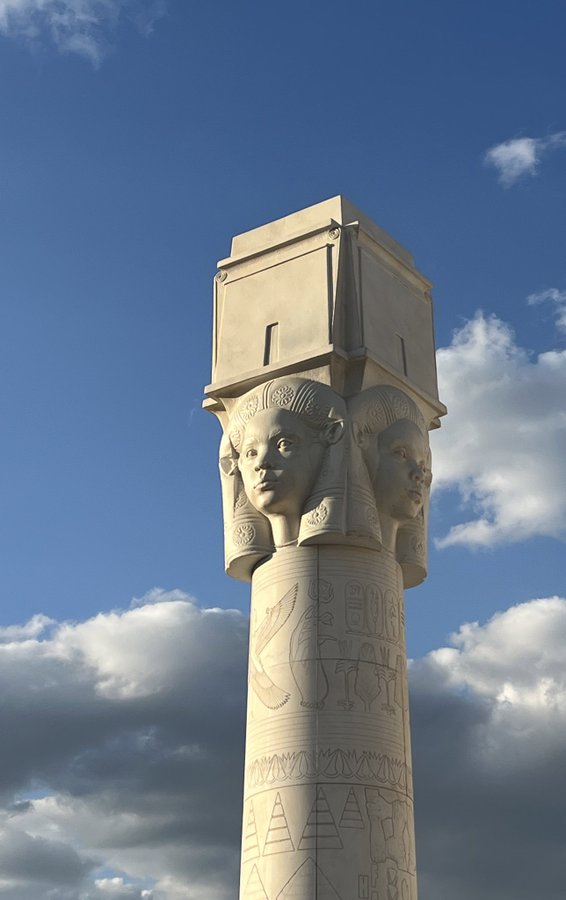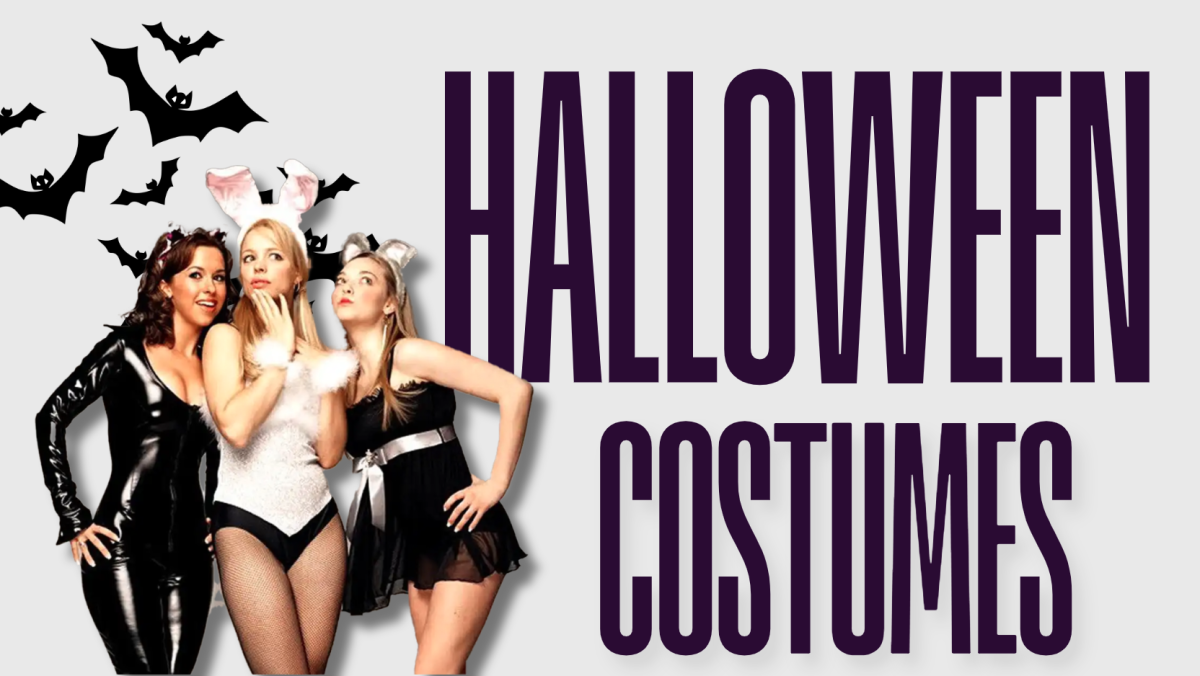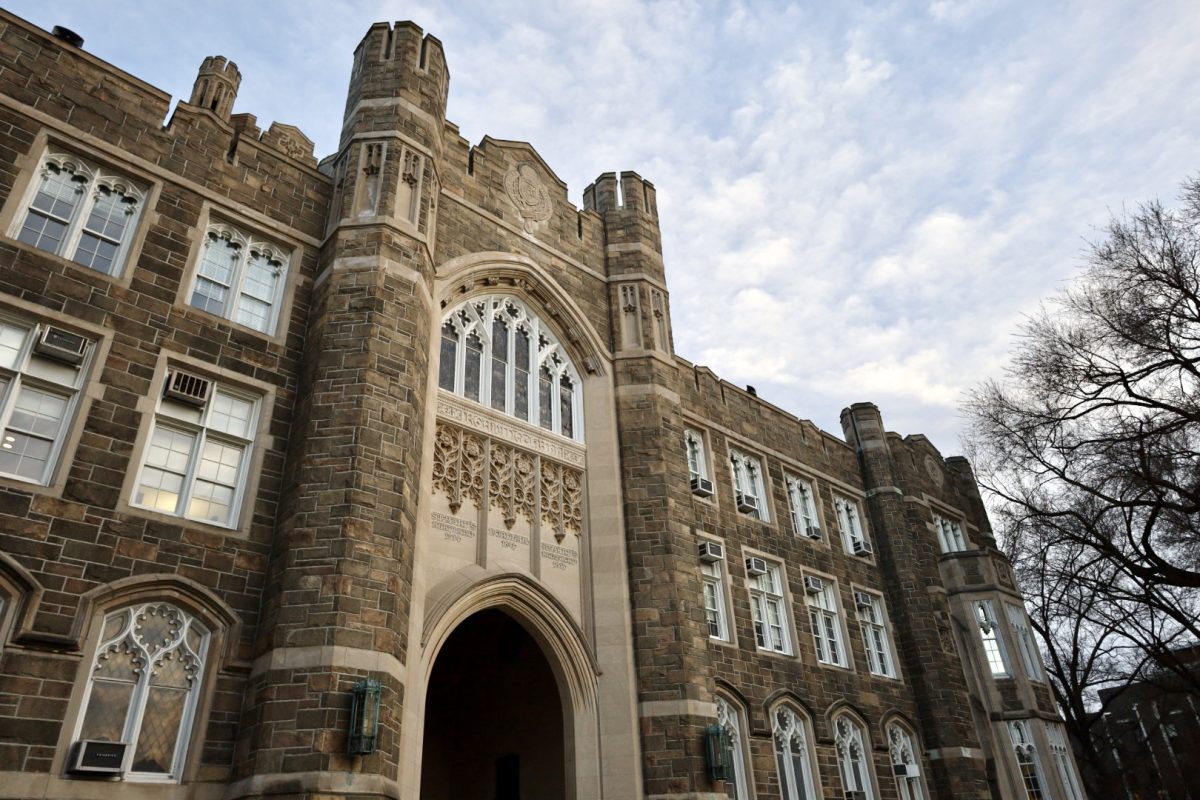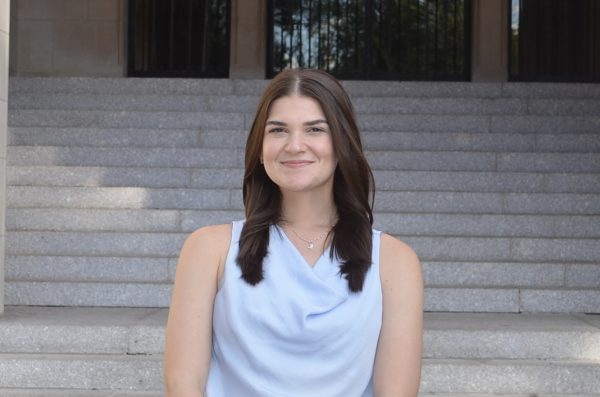From April 18 to Oct. 22, the Met is featuring a new exhibit, and it is probably the museum’s best hidden gem. Artist Lauren Halsey was commissioned to create a unique architectural design, one that blended Black culture in Los Angeles with ancient Egyptian art style. This structure is being displayed on the roof of the Met in the museum’s Iris and B. Gerald Cantor rooftop garden.
In order to view this exhibit, guests must take the elevator all the way to the top floor, where they can exit to the roof of the Met. Entering the rooftop garden feels like walking into a secret room. It seems as though it is closed off from the rest of the museum, yet somehow even more connected to the rest of the city. The walls are lined with hedges and greenery complimented by the most beautiful view of the city skyline. In the center of the garden is Halsey’s commission: a giant white temple structure flanked with columns and sphinx sculptures.
In an interview with the Met, Halsey claimed that she was “super inspired by Archigram’s walking city proposals… That compelled me to think about these architectural interventions that I wanted to see happen in empty lots in Los Angeles.”
Halsey said that her commission, titled “the eastside of south central los angeles hieroglyph prototype architecture,” was a prototype for her vision of a temple built on a main street in Los Angeles. Halsey explained that her central idea is the hope of building architectural intervention in spaces in the city to represent the city and make it more beautiful. “The eastside of south central los angeles hieroglyph prototype architecture” is certainly a beautiful adaptation of Los Angeles Black culture.
In creating this specific piece, Halsey sourced her style from looking at the Egyptian pieces in the Met. The hieroglyphs on ancient pyramids are designed to tell stories. They are incredibly intricate and can not be understood by just a quick glance. Halsey made her hieroglyphs the same way. Made of reinforced glass fiber concrete, Halsey made about 750 engravings on walls of her temple. She noted that the hieroglyphs do not just make the art, but the physical structure as well, since they cover every wall.
Advertisement signs, inspirational messages and depictions of people and places are just some of the many images on the temple. Messages such as “Moving Forward” and “Black x Brown Power” reinstate the true meaning of her piece: to represent the Black culture of Los Angeles. These images and messages all come together to create fantastical scenes on the temple walls, combining the modern world with both the past and the future.
The sphinxes placed on each corner of the space each represent one of Halsey’s loved ones. They are sculpted as traditional ancient Egyptian style sphinxes with the faces of her loved ones. Halsey said that the sphinxes are meant to be the “protectors” of the structure, as you have to pass through them in order to enter the temple. On the tops of the columns placed alongside each sphinx are faces of her cousins, good friend and favorite artist.
The temple itself has a rather unique shape. Halsey said she wanted “folks to feel welcomed.” This effect is held up by the fourth wall being entirely opened, along with an open oculus-style roof.
Overall, this was one of my favorite exhibits I have visited at the Met so far. Halsey’s strategic design made her piece easy to understand. It was not difficult to see her message in the artwork and walking through the temple itself was a cool experience. The architectural aspect of this exhibit made it interactive in a sense, which was certainly appealing to viewers. The rooftop garden was beautiful, and the structure both stood out and fit right in with the beauty. Taking root in an ancient style of art and making it reflect modern culture was something I haven’t seen from a Met exhibit before, and definitely caught my interest. As this piece is just a prototype of what Halsey hopes to accomplish, I would love to see her dream of artwork filling spaces in the real city come to life.








































































































































































































